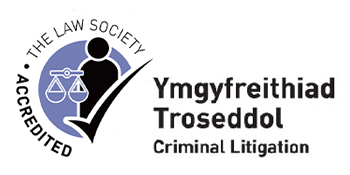STRAIN
A'I GWMNI
AND COMPANY
14A Stryd Penlan, Pwllheli, Gwynedd

Assault sentencing guidelines (Saesneg yn unig)

Dyddiad: 2021-06-01
The existing assault guidelines came into effect in January 2012; at the same time, the attempt murder guideline was revised.
Following an “extensive and complex project”, new sentencing guidelines have been announced for certain violent offences, including new guidance for assaults on emergency workers.
Sentencing guidelines are referred to by any sentencing tribunal to assist in setting the correct level of sentence.
Each guideline starts with a consideration of culpability or blameworthiness. Specific factors such as a leading or lesser role place the offence in the category of high or low culpability. The level of harm is then assessed and also placed into a category. The combination of culpability and harm sets the sentencing range into which the offence falls; the placement within the sentencing range depends on the aggravating and mitigating factors.
The consultation
The consultation from the Sentencing Council sought views on seven draft guidelines for common assault, common assault of an emergency worker, assault with intent to resist arrest, assault occasioning actual bodily harm, inflicting grievous bodily harm with and without intent and attempted murder.
In particular, views were sought on the following:
- the principal factors that make any of the offences included within the guidelines more or less serious;
- the additional factors that should influence the sentence;
- the approach taken to structuring the draft guidelines;
- the types and lengths of sentence that should be passed;
- differences between the current guidelines and the new, revised guidelines.
What has changed?
New guidelines take effect from 1 July 2021.
Common assault
New factors have been added, including;
A high culpability factor of “intention to cause fear of serious harm, including disease transmission”.
An aggravating factor of “deliberate spitting or coughing.”
Offences of common assault are the highest volume offences covered in the violence guidelines.
Assault occasioning actual bodily harm
An aggravating factor of “deliberate spitting or coughing.”
Attempted murder
The guideline does not include a life sentence at any starting point, as it would be for murder. The determinate sentences are high though, to reflect that culpability in attempted murder is of the highest level, even higher than required for offences of murder.
The Council decided that the guidelines should be revised to reflect the gravity of the offences properly. There had apparently been concerns that some sentences in the existing guideline were too low. In some cases, much lower than for a murder on the same facts would have been, even though the intent was to cause death (for murder, the intent is to cause grievous bodily harm or death).
Extensive testing of sentences against cases was undertaken in developing the guideline, and the Council says it is satisfied that the descriptions and placement of factors relevant to the seriousness assessment will ensure appropriate sentences.
Emergency workers
This is an entirely new guideline coming into effect following consultation. Emergency worker includes police officers, NHS workers, those working for the fire service, prison officers and custody officers.
The elements of this offence are the same as for common assault, but there is a higher maximum sentence of 12 months. A more serious injury should be charged as a more serious assault offence.
In developing the guideline, the Sentencing Council considered whether an uplift to the common assault guideline should just be applied for assaults on emergency workers. This was dismissed due to demands from sentencers for a full guideline for the offence. However, the guideline contains an uplift approach for both aggravated offences of assaults on emergency workers and for racially and religiously aggravated offences.
Other changes
All guidelines except attempt murder have a new high culpability factor of strangulation, including asphyxiation and suffocation. All guidelines will have a high culpability factor of “victim obviously vulnerable due to age, personal characteristics or circumstances.
The new guidelines contain more offence categories and starting points than previously. The reasoning behind this is to ensure appropriate assessments of culpability and harm so that proportionate sentences are imposed to reflect the seriousness of the offending.
Another substantial change is the addition of a further aggravating factor relating to those providing a public service. It is phrased as an “offence committed against those working in the public sector or providing a service to the public, or against a person coming to the assistance of an emergency worker”.
The Prison Reform Trust commented on the longer periods that individuals would be spending in custody. Their concern was that the government had not committed to further resources, which would lead to a decline in prison standards. The Council quite simply said that the provision of prion places was not a matter which should influence its determination of appropriate sentences.
Some guidelines indicate that higher sentences will be imposed, but this may or may not be the case. When the earlier guidelines were introduced, their impact was evaluated. For GBH, the guideline resulted in sentences increasing in excess of that estimated. For ABH, it was estimated that the guideline would result in less severe sentences, but they did not decrease as expected.
How can we help?
We ensure we keep up to date with any changes in legislation and case law so that we are always best placed to advise you properly. If you would like to discuss any aspect of your case, please contact Michael Strain on 01758 455 500
[Image credit: Arms over the entrance to the Crown Court and County Court in St Aldates’, Oxford. Photograph taken 2006-03-25. Copyright © 2006 Kaihsu Tai. ]
Yn ôl i'r prif dudalen blog.
Mae Ein Arbenigedd yn Cynnwys:
> Anaf Personol
> Cyfraith Teulu
> Trosedd
> Ymgyfreitha Cyffredinol
Gwybodaeth Defnyddiol
> Ariannu a Costau
> Cysylltiadau a Gwybodaeth Pellach
> Cydnabyddiaeth a Cymhwysterau
> Geirda
Cysylltwch â Ni
Cyfeiriad: 14A Stryd Penlan, Pwllheli, Gwynedd
Ffôn: 01758 455500
E-bost: office@strainandco.co.uk

© 2025 Strain a'i Gwmni. Rheolir ac Awdurdodir gan yr SRA rhif 644052. Cedwir Pob Hawl. Rhybudd Preifatrwydd.
Gwefan gan Delwedd.